Singer Joelma's tacacá hit song went viral across Brazil, which highlighted this typical Amazonian dish and its ingredients, such as jambu (acmella oleracea). Although the general public's "discovery" of regional dishes and ingredients is relatively recent in the country, the therapeutic properties of Amazonian flora and fauna are already well-known to scientists.
The Amazon is home to approximately 20% of the planet's biodiversity and has untapped but very promising potential to provide raw materials for a wide range of healthcare applications. However, jambu has been studied for some time locally, nationally, and internationally for its active ingredient, which causes in the mouth what is called "tremble" – a feeling of numbness.
What causes this sensation when ingested is a component called spilanthol, which has anesthetic properties – hence, the tingling sensation in the mouth. This characteristic has long been recognized in traditional medicine, which uses the plant for its analgesic, anti-inflammatory, and antimicrobial effects for various ailments, such as dental, throat, and stomach problems.
TRADITION
This traditional knowledge has found its way into scientific research, demonstrating the importance of combining both types of knowledge. Ana Paula Silva, a PhD candidate in Food Science and Technology at the Federal University of Pará (UFPA), keeps this family tradition. "I'm from Baião, a municipality in Pará. I even saw my grandmother using jambu infusion to rub on wounds and relieve the pain," she says. Today, the researcher studies the properties of jambu at the Laboratório de Tecnologia Supercrítica UFPA (Labtecs) [Supercritical Technology Laboratory], located in the Guamá Science and Technology Park (PCT).
For her doctorate program, Ana Paula studied the best ways to extract jambu oil to maximize the production of its active ingredients. She created a specific device that uses carbon dioxide to transform roasted and ground jambu into extract, using supercritical technology.
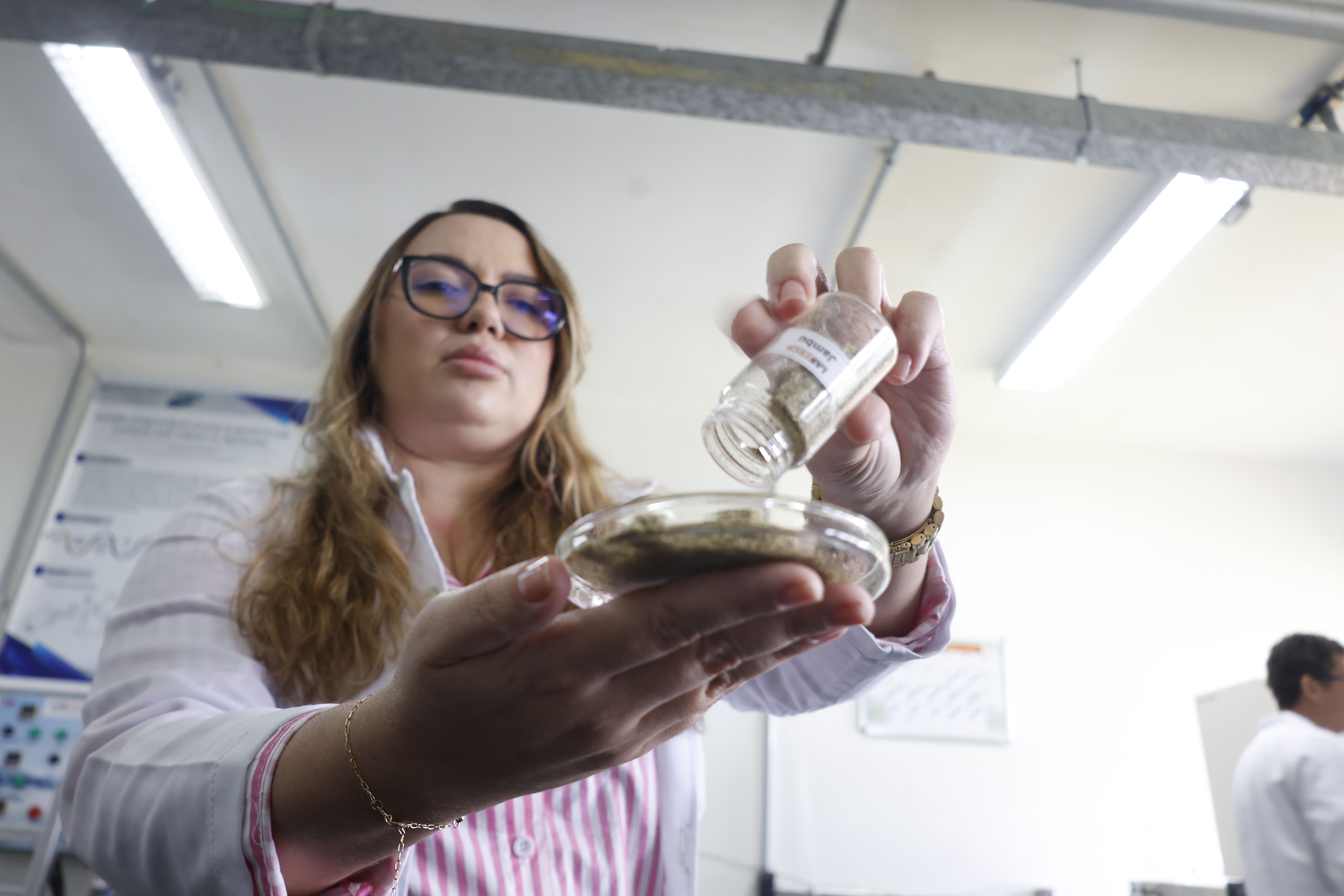
This method allows the creation of products that are more natural, with fewer added components. One product, for example, is made with only six ingredients, while similar products on the market contain at least twenty. "These are ingredients that will be absorbed by the body. Therefore, fewer products are ingested for a given effect," explains the researcher.
The product, made from jambu, contains only six ingredients and is a fast-absorbing film for cancer patients who suffer from dry mouth. "No one will take the pure extract. So, we consider the most comfortable application method based on the use. Cancer patients, especially head and neck cancer patients, have their salivary glands affected by radiation and chemotherapy. Saliva production stops or drops dramatically. The patient can carry the film in their pocket and place it in their mouth at any time, and it dissolves. The spilanthol begins to work, both with its anesthetic and saliva-stimulating properties. We also produced a mouthwash that can be used before meals to stimulate saliva so patients can eat better," explains Ana Paula.
So far, the research has already conducted preclinical testing, that is, on animals. The next step is to contact hospitals for human trials.
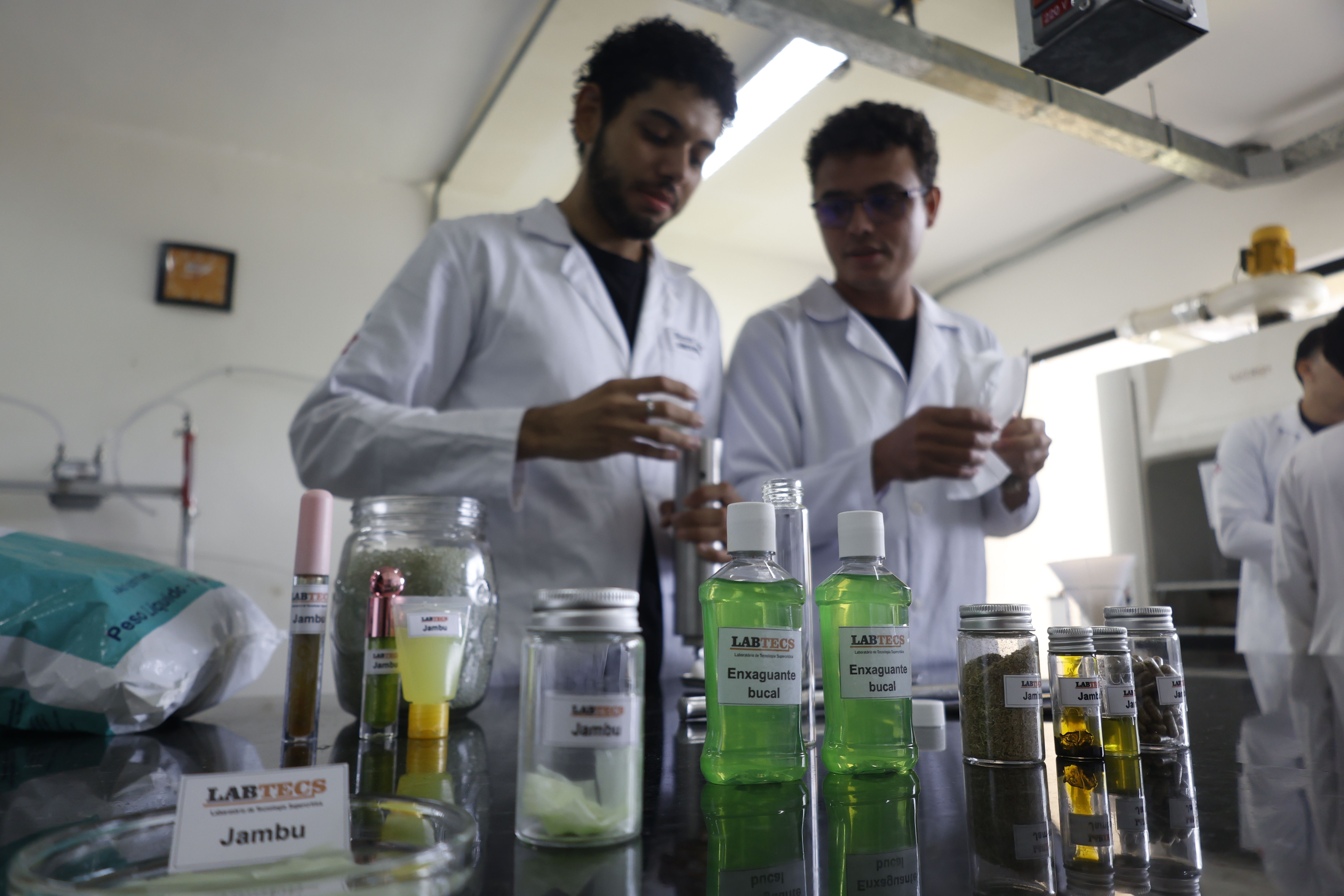
USES
According to the researcher, jambu has a wide range of uses in healthcare. "The substance in jambu, spilanthol, has anesthetic, analgesic, anti-inflammatory, and antimicrobial properties. These four properties are important, for example, in the film for cancer patients, because dry mouth promotes the proliferation of microorganisms," she explains.
In addition to the film and mouthwash, Labtecs has already produced nutraceutical capsules that enhance the use of other nutraceuticals, such as vitamins. The laboratory also manufactures jambu oil and extract, used by the pharmaceutical and cosmetic industries.
"The biggest problem with jambu extracts already on the market is their composition. Some contain alcohol, for example, which is harmful and reduces the benefits of the products by half. Water, on the other hand, is susceptible to the proliferation of microorganisms. Therefore, these products are not as potent as what we produce here, which is 100% pure, solvent-free, and residue-free," she points out.
The most recent use of the jambu extract studied in the laboratory is for the treatment of cardiac arrhythmia. "We've already conducted preclinical testing in animals, which demonstrated antiarrhythmic activity similar to medications already on the market. However, these medications have side effects, and jambu extract has not demonstrated any effect in this regard. This is a global demand. Now, we're seeking partnerships for clinical studies in humans," she adds.
VERTICALIZATION
Ana Paula Silva founded a startup based in the Guamá PCT, called Green Process Solutions. One of its areas of focus is working with jambu. "Since it's not a medicine, it doesn't require human clinical trials to begin selling, just approval from Anvisa [the Brazilian Health Regulatory Agency]. We're still conducting further testing, but the goal is to begin commercializing it soon," she explains.
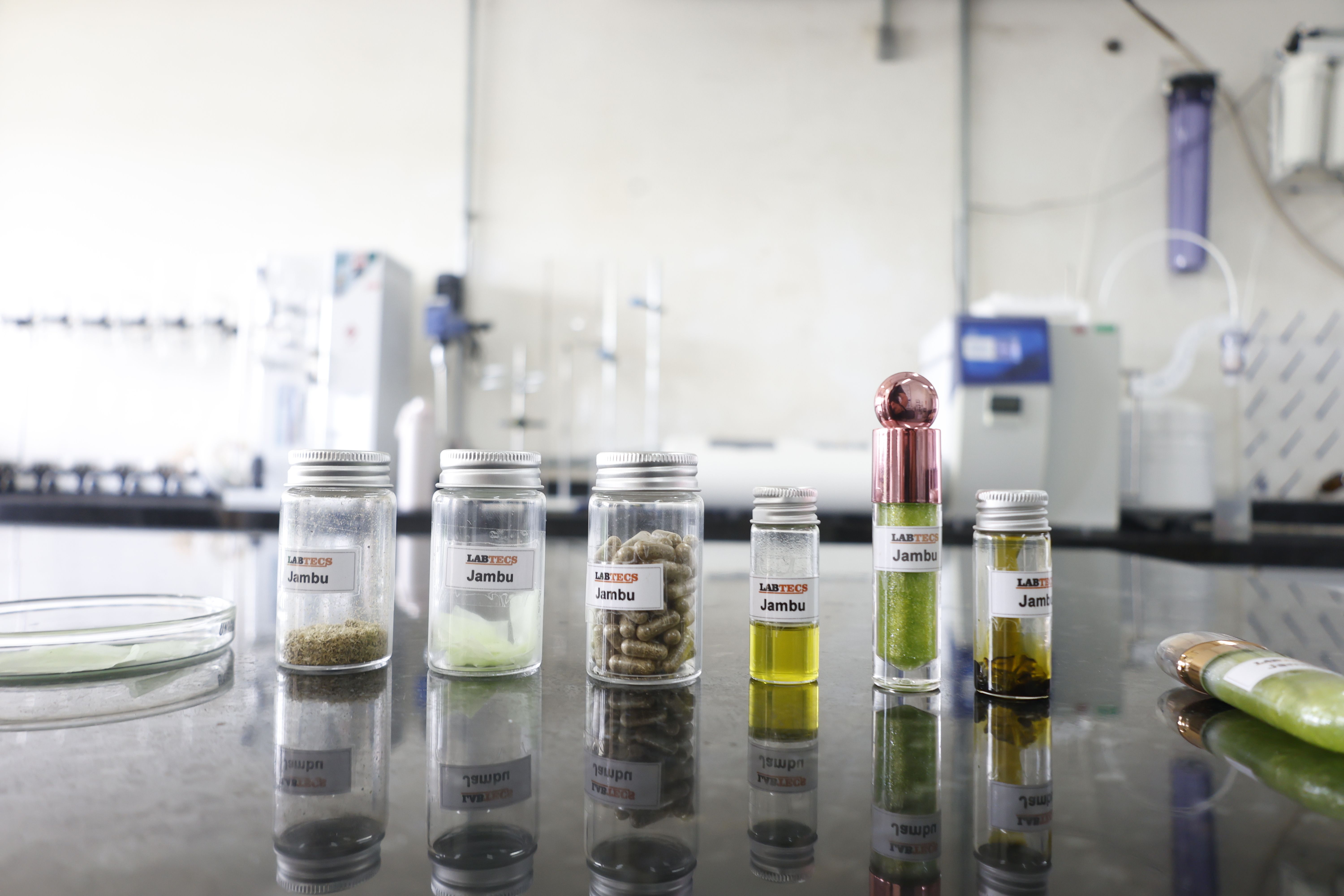
For the researcher, it's important that Amazonian biodiversity be vertically integrated locally. "It's no use just supplying raw materials. We need to add value and technology to our products. We need to do everything here, from extraction to research to production. Only then will we more effectively reach the communities and the region," she analyzes.
Jambu is widely studied internationally. According to a survey by Professor Rodney Rodrigues of the State University of Campinas (Unicamp), there are approximately 300 patent applications worldwide involving jambu. Only 27 of them are Brazilian. "When we find ourselves faced with the rest of the world knowing our stuff better than we do, it's desperate. We need to accelerate our technological development, explore this potential to develop and produce right here," says Ana Paula.
Use in odontology is promising
Another study, also conducted at UFPA, investigated the potential of a jambu-based gel for reducing tooth sensitivity after whitening. The research, developed during Brennda de Paula's doctoral studies in the university's Graduate Program in Dentistry, yielded promising results.
"Tooth whitening causes inflammation, albeit brief, of the dental pulp. This leads to discomfort and sensitivity. There is no gold-standard active ingredient on the market for eliminating this sensitivity. After reviewing the literature, we found spilanthol's anesthetic, anti-inflammatory, and analgesic properties. We discovered that this active ingredient acts on receptors present in the dental pulp. Therefore, we believed it could indeed influence the tooth, reducing sensitivity, and we created a gel for this purpose," explains the dentist.
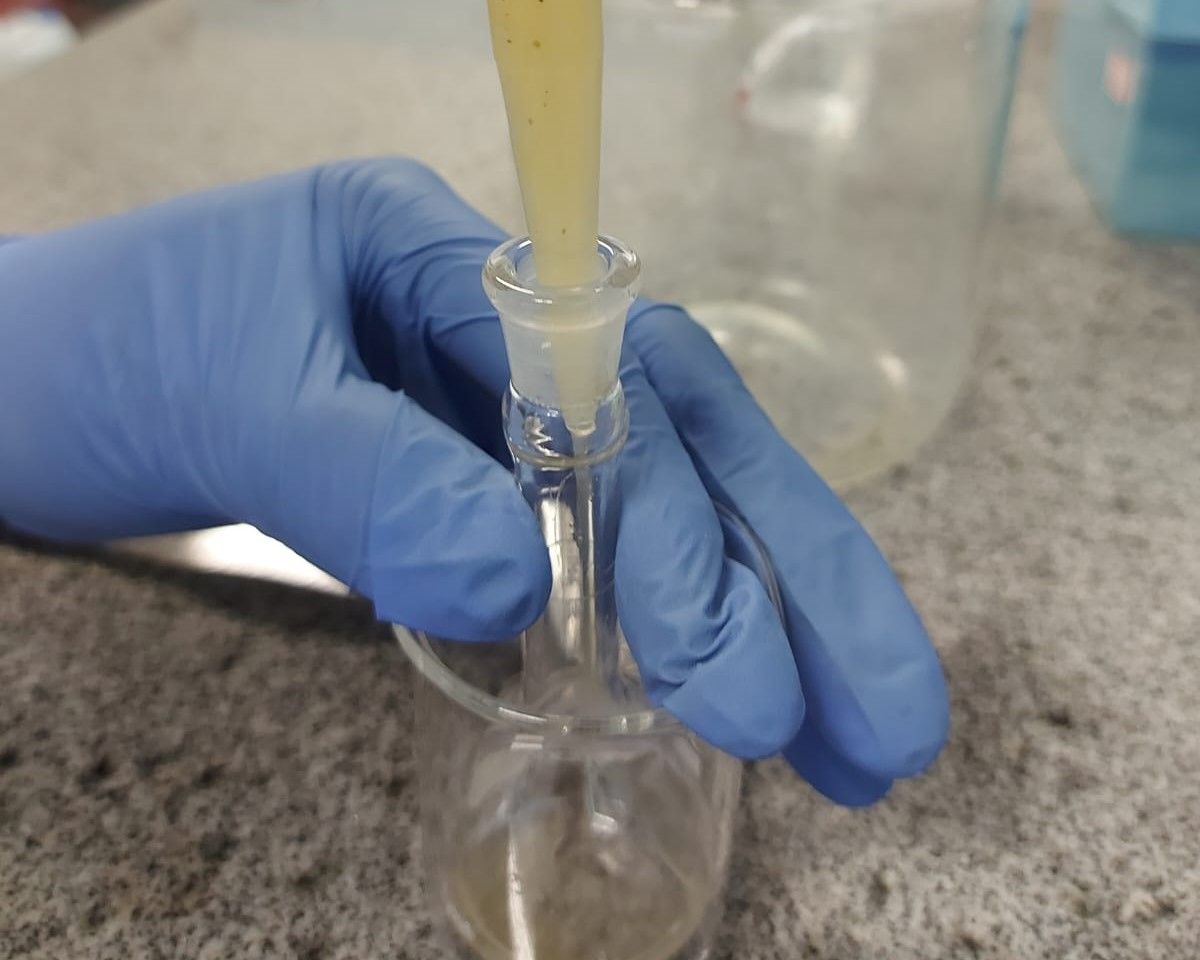
The research phases involved extract production, purification, gel creation, and evaluation of its effects on cells, leading to human testing. "We saw a reduction in sensitivity, but these results can still be improved, either with the gel itself or by testing other vehicles that can be applied to the tooth surface," explains Brennda.
Although Brennda's research has already concluded, research in this area continues with her advisor, Cecy Silva, and other researchers from the Program. "There is other research on tooth sensitivity itself, independent of whitening, and also with other approaches. But all still require shelf testing, stability testing, and other procedures recommended by Anvisa. Only then will these products be able to reach the market," the specialist points out.
INNOVATION
Brennda emphasizes that her study brought innovation to the field. "Researching the literature, we found nothing linking jambu's action on teeth. There was already research in dentistry, such as on the treatment of oral mucositis, but nothing on the dental level. So, we had to start from scratch, because there was no recipe or other study that could guide or indicate a methodology. We created everything, including the extraction and purification process of the extract. We spent two years developing this methodology, before beginning testing," she recalls.
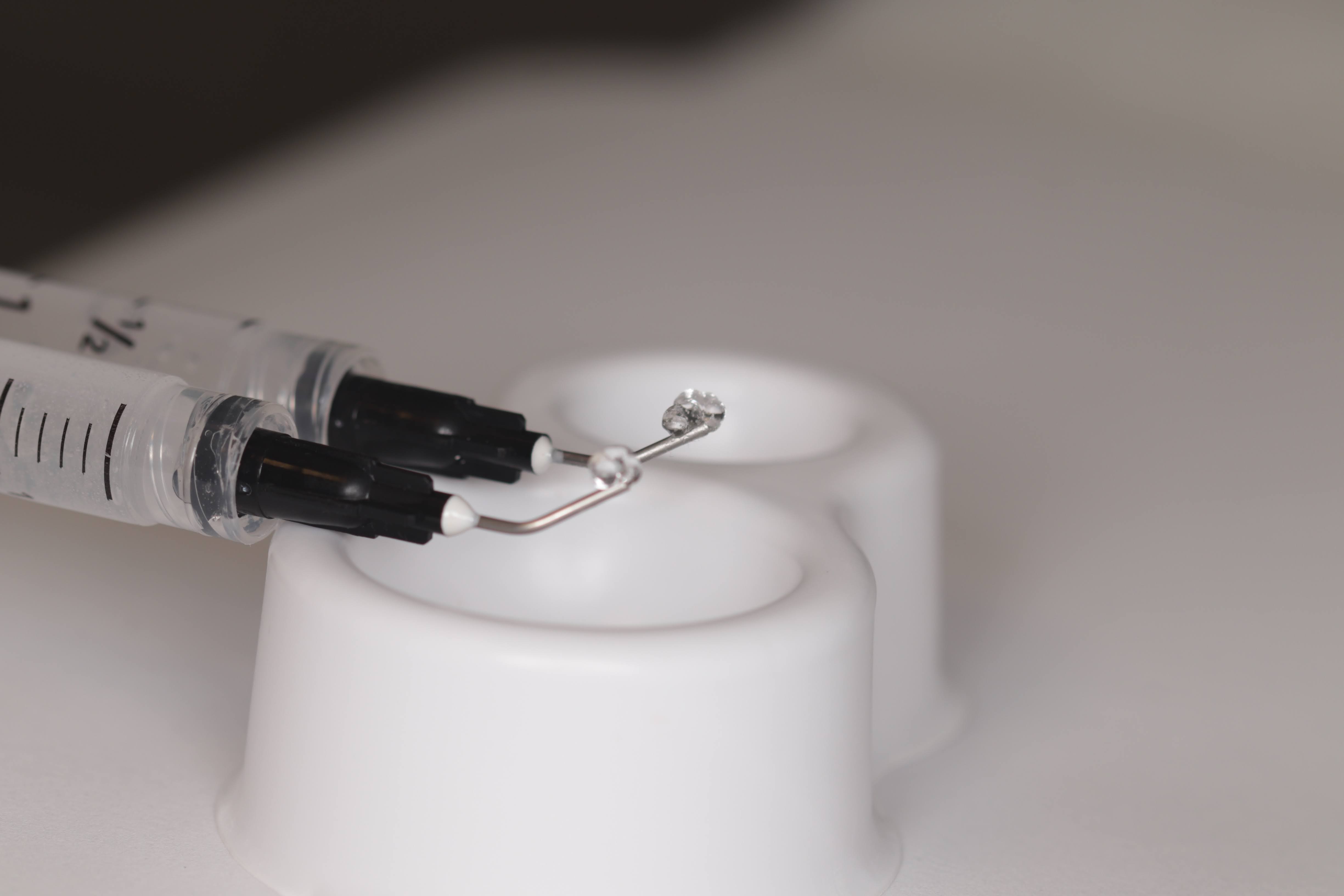
The researcher also considers it innovative to present a product from Amazonian biodiversity as a solution for dentistry. "Instead of researching synthetic active ingredients, why not use a natural active ingredient that provides a positive effect without side effects?"
Unique sensory effects attracted scientist
At Unicamp, studies on the properties of jambu have been ongoing since 2012 and have already yielded four patents for Rodney Rodrigues, from the university's Multidisciplinary Center for Chemical, Biological, and Agricultural Research (CPQBA).
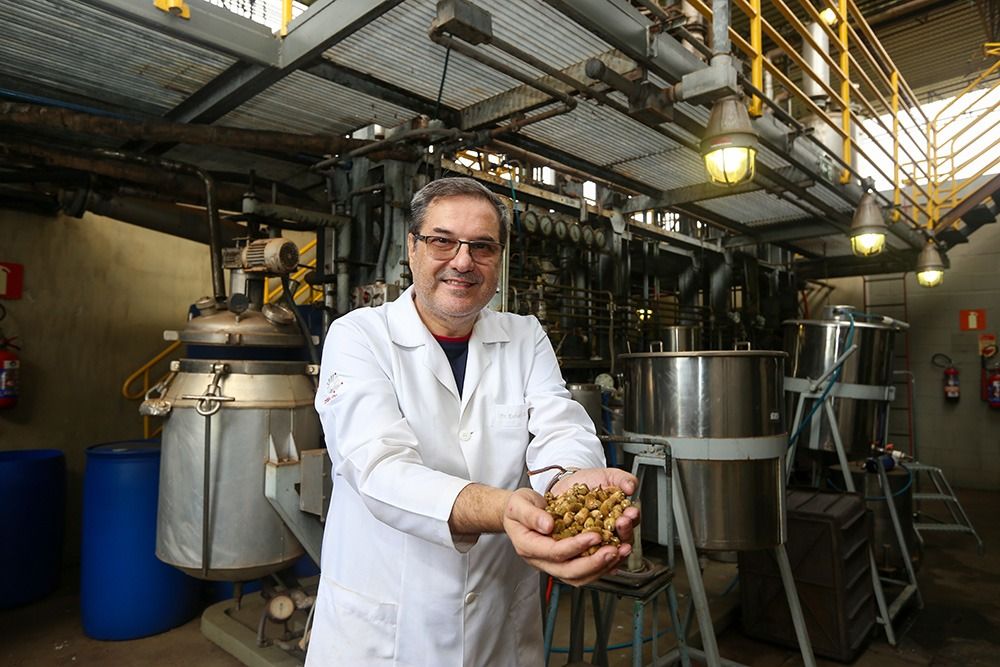
"I became interested in researching jambu because I was curious about its unique sensory effects, including the tingling sensation in the mouth. So, since 2012, I have been studying the plant to understand its chemical and pharmacological properties, and its potential applications in various fields. During this time, my research, along with other colleagues, has involved the chemical characterization of jambu, the extraction process, innovative formulations, and technologies applicable to the food, beverage, cosmetic, and pharmaceutical sectors. Some of the results obtained include standardized extracts, functional beverages, mouthwashes, natural anesthetics, and cosmetics," Rodrigues explains.
PATENTS
Among the studies that generated patents, conducted by doctoral students supervised by Rodrigues, are the development of a bioadhesive for oral anesthetic administration; the creation of a gel and cream for topical use as a pre-anesthetic, with anti-inflammatory effects similar to lidocaine; and the process of obtaining jambu extract, which makes better use of spilanthol and removes chlorophyll. Another patent was obtained for studies on the synthesis of spilanthol, which showed superior results to those of natural spilanthol.
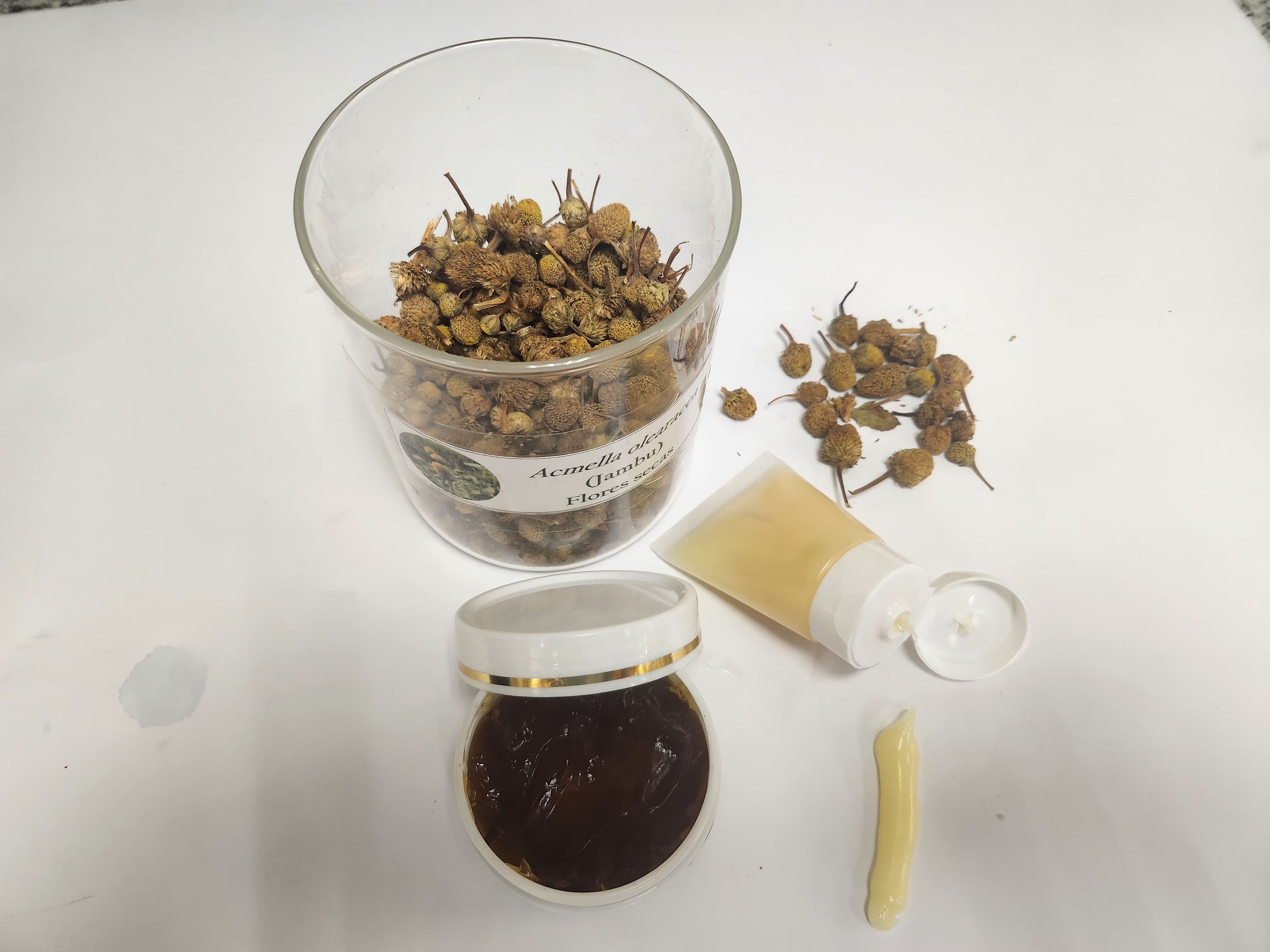
For Rodrigues, it is essential that researchers value traditional knowledge. "It guides science in the selection of species with therapeutic potential. Jambu is a clear example of how popular use inspires research and technological innovation. Amazonian biodiversity is a veritable storehouse of biomolecules, with enormous potential for generating new pharmaceuticals, natural anesthetics, supplements, and functional cosmetics, uniting tradition and science for the benefit of health," he states.
INSTITUTIONAL PARTNERSHIP
The production of Liberal Amazon is one of the initiatives of the Technical Cooperation Agreement between the Liberal Group and the Federal University of Pará. The articles involving research from UFPA are revised by professionals from the academy. The translation of the content is also provided by the agreement, through the research project ET-Multi: Translation Studies: multifaces and multisemiotics.